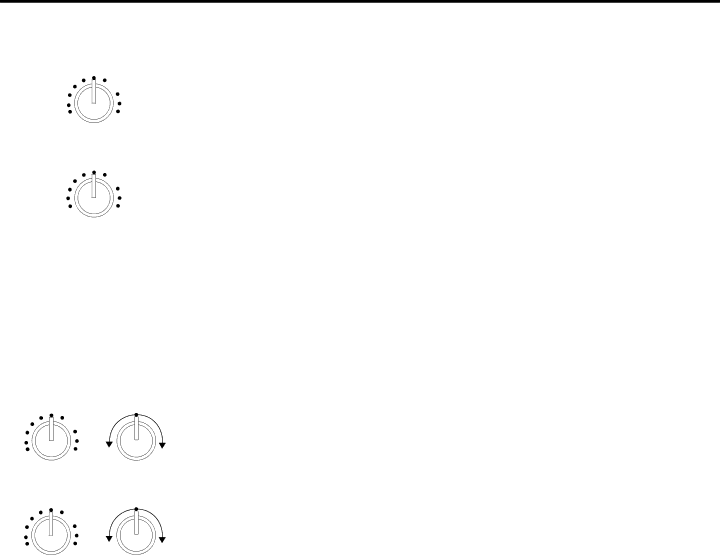
Using Aux Sends and Returns
0
∞+10
AUX 1L
0
∞+10
AUX 2R
The PL 1602’s two Auxiliary sends allow you to combine the signal from multiple channels and send the resulting mix to external devices such as effects proces- sors. When an Aux send knob is at the “0” position, the signal is routed with unity gain (that is, no boost or attenuation). As it is turned clockwise from the
0 position, the signal is boosted; as it is turned counterclockwise from the 0 posi- tion, it is attenuated. Both Aux sends are
| 0 |
|
|
∞ | +10 | L | R |
AUX 1/2 RETURN |
| BALANCE | |
| 0 |
|
|
∞ | +10 | L | R |
AUX 3/4 RETURN |
| BALANCE | |
Although the PL 1602 can accommodate up to sixteen monophonic inputs, it is optimized to provide eight stereo channels, so we’ve designed the Aux sends so that, when a “matched” pair of consecutive channel inputs (that is, both odd- numbered and
The PL 1602 also provides two stereo Auxiliary returns. These allow you to return signal from outboard devices, either in stereo pairs or monophonically (many popular effects processors provide a single mono input but have two stereo outputs). In practice, you’ll probably want to use the Auxiliary returns to bring in signal from connected effects processors. If the effects processors have stereo outputs, they should be connected to both the left and right Auxiliary return inputs so that their stereo integrity is retained. If they have mono outputs, you can route them to either the left or right inputs and then use the Auxiliary return Balance control to adjust the relative level of each paired signal. In this way, you can actually connect up to four monophonic devices to the PL 1602’s Aux return section.
Each of the stereo Auxiliary returns is somewhat similar to a stereo channel, except that a signal being brought into to a stereo channel can be equalized if necessary and optionally sent on to other outboard devices (via Aux sends or channel inserts).
18